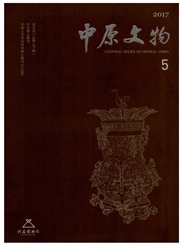

 中文摘要:
中文摘要:
我国北方大部分地区,距今8000年前后的降温事件之后,才真正意味着人类的全新世气候适宜期的开始。距今5500年前后降温以及由此带来的干旱,使甘青地区这一时期人口与资源之间的矛盾的激化,甘青地区葫芦河流域仰韶文化中晚期出现的社会复杂性,可能是在资源紧张状态下的一种人类文化行为的生态调整。甘青地区距今4500年气候转变可能首先促进或刺激了齐家文化的发展。但随着气候转变的幅度增加,环境条件渐趋恶劣并超过了当时人类所能承受的极限,西北地区史前农业体系不可避免的发生彻底地解体和衰落。长期的干旱环境可能是导致齐家文化的衰落以及齐家文化之后较长时间农业文化的低潮的重要原因之一。
 英文摘要:
英文摘要:
In most parts of Northern China, it really means that the Holocene had began since the climate event which temperature went down about 8, 000 years around. About the cooling since 5, 500 years, as well as the resultant drought, so that the contradiction between the population and resources of Ganqing are- as was intensified. The emerging social complexity in the late Yangshao culture would be an ecological adjust- ment of acts of human culture under a state that the natural resource was strain. The climate transition since 4, 500 years in Ganqing areas may promote or stimulate the development of Qijia culture firstly. However, with the increasing at a rate of climate change, environmental conditions are becoming poorer more than human be- ings can bear. Therefore the prehistoric agricultural system of the Northwest Territories was inevitable disinte- grated and declined thoroughly. Environment for long - term drought may lead to the decline of Qijia culture, as well as one of the important reasons that a longer period of time after Qijia culture, agricultural culture was law.
 同期刊论文项目
同期刊论文项目
 同项目期刊论文
同项目期刊论文
 期刊信息
期刊信息
